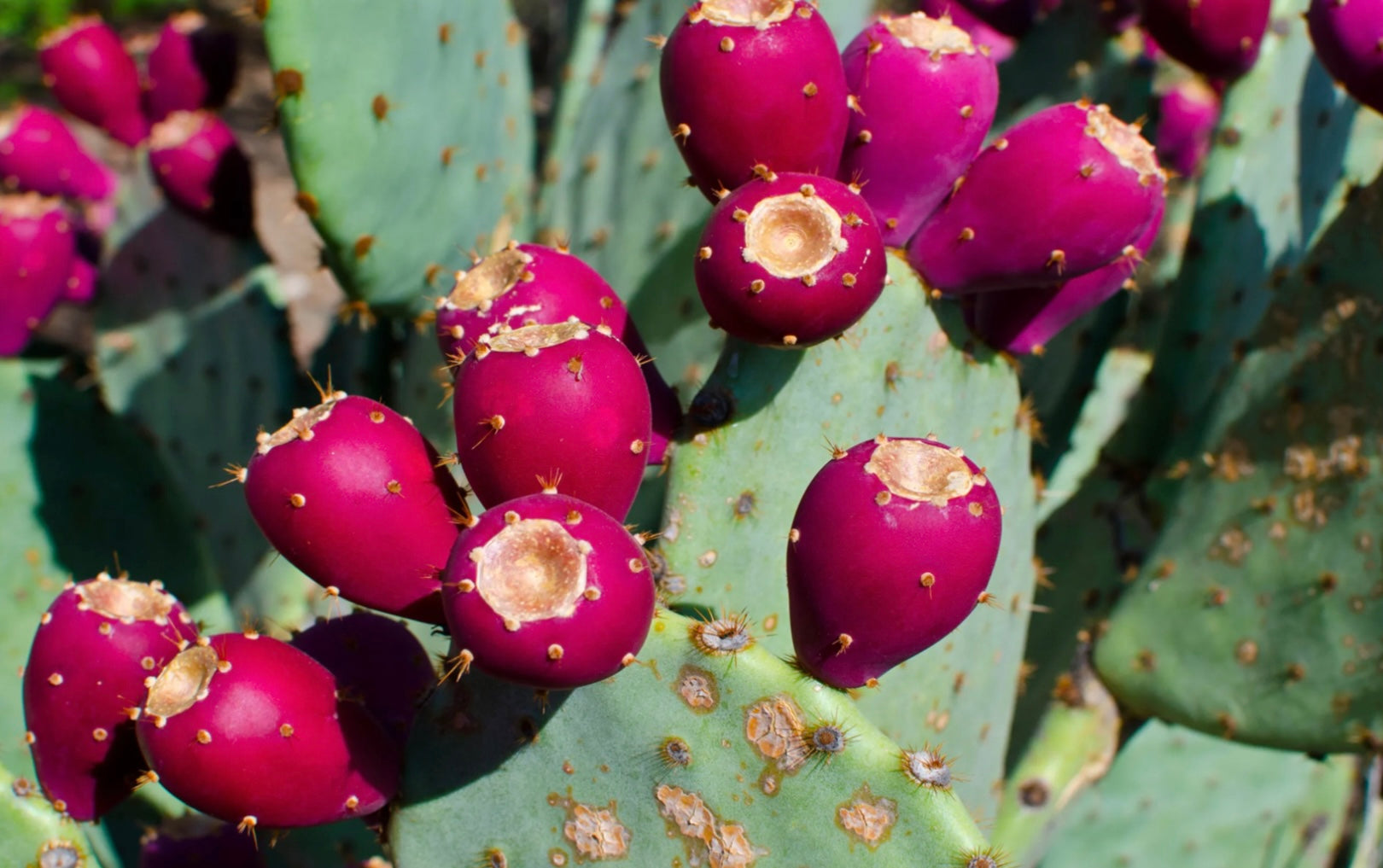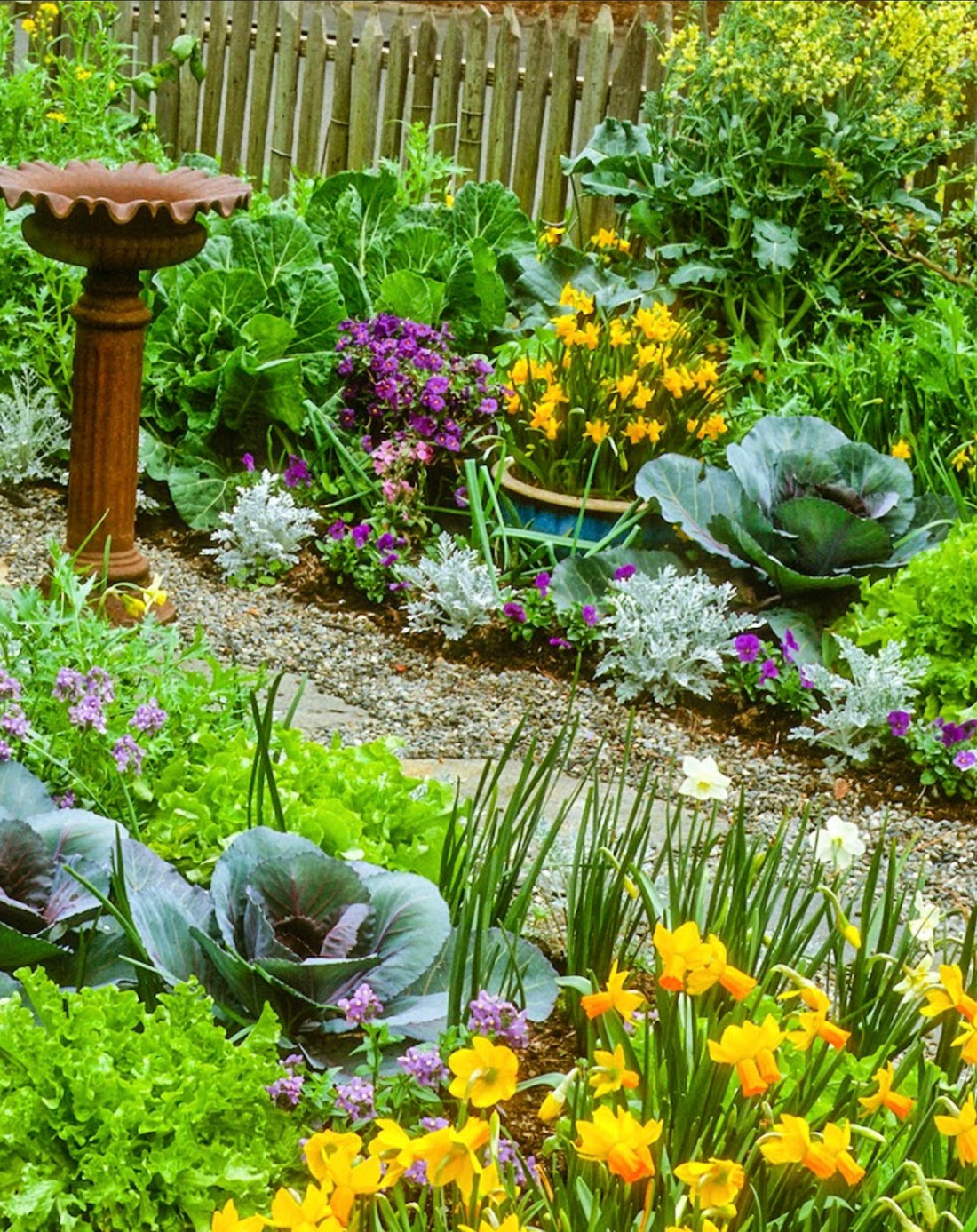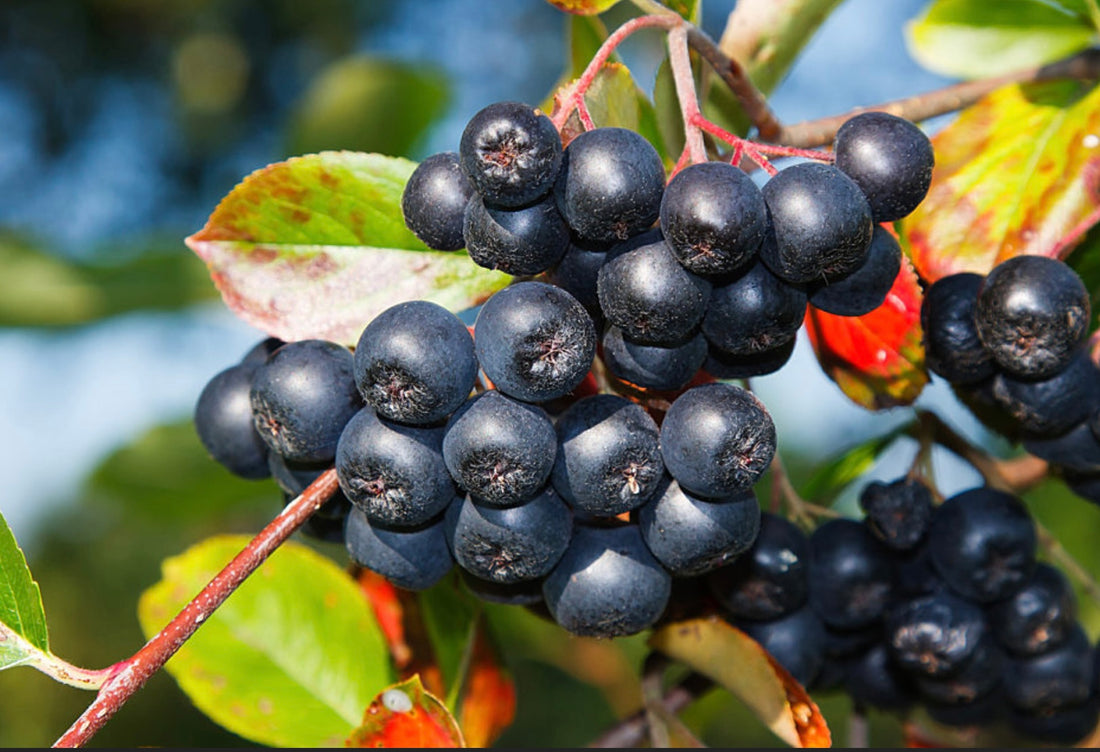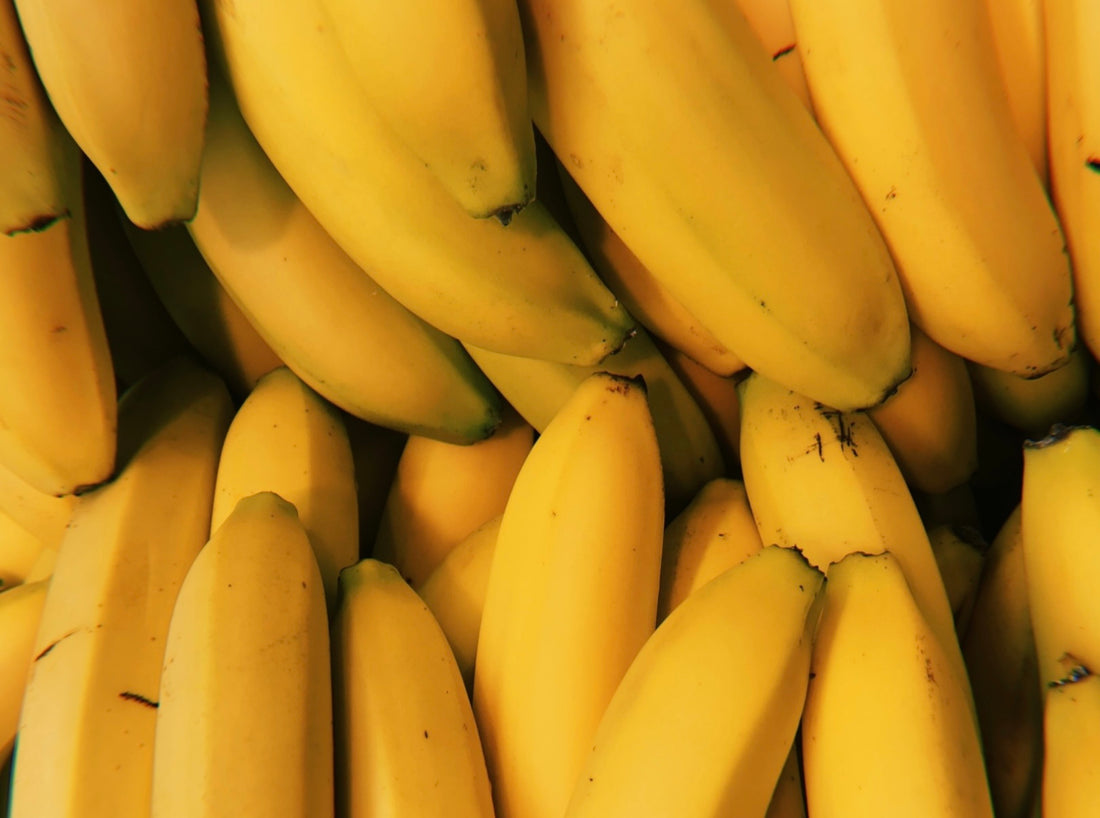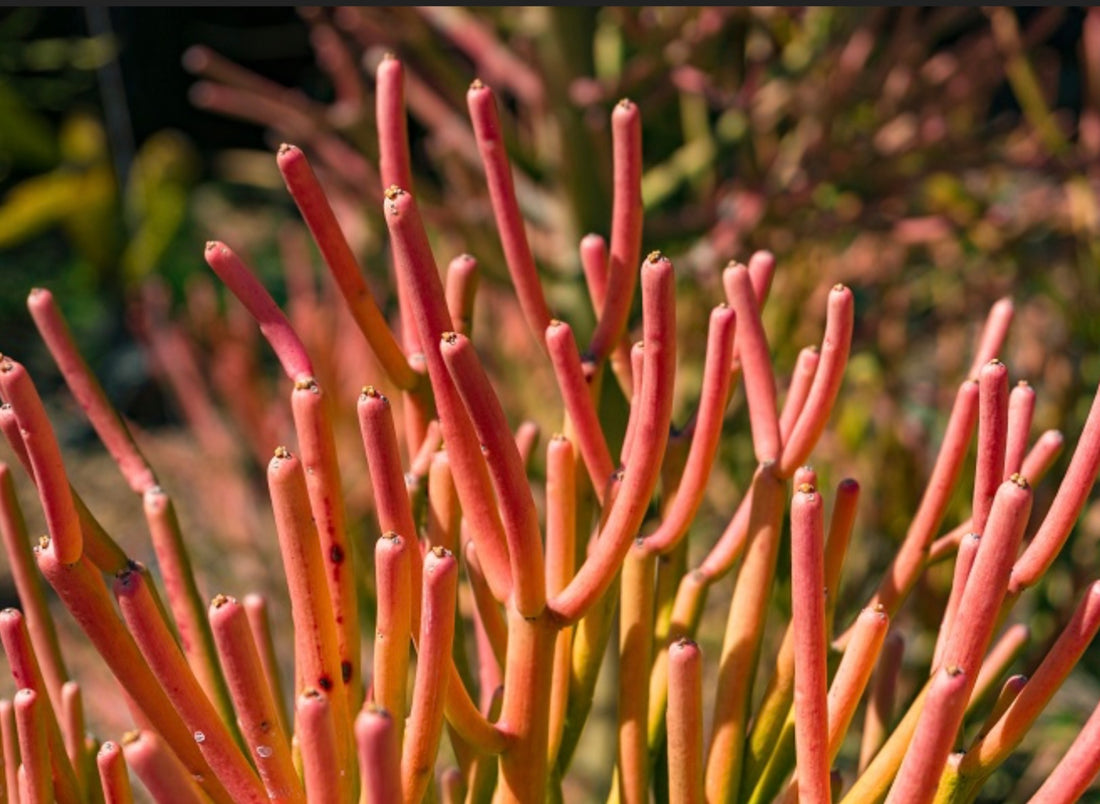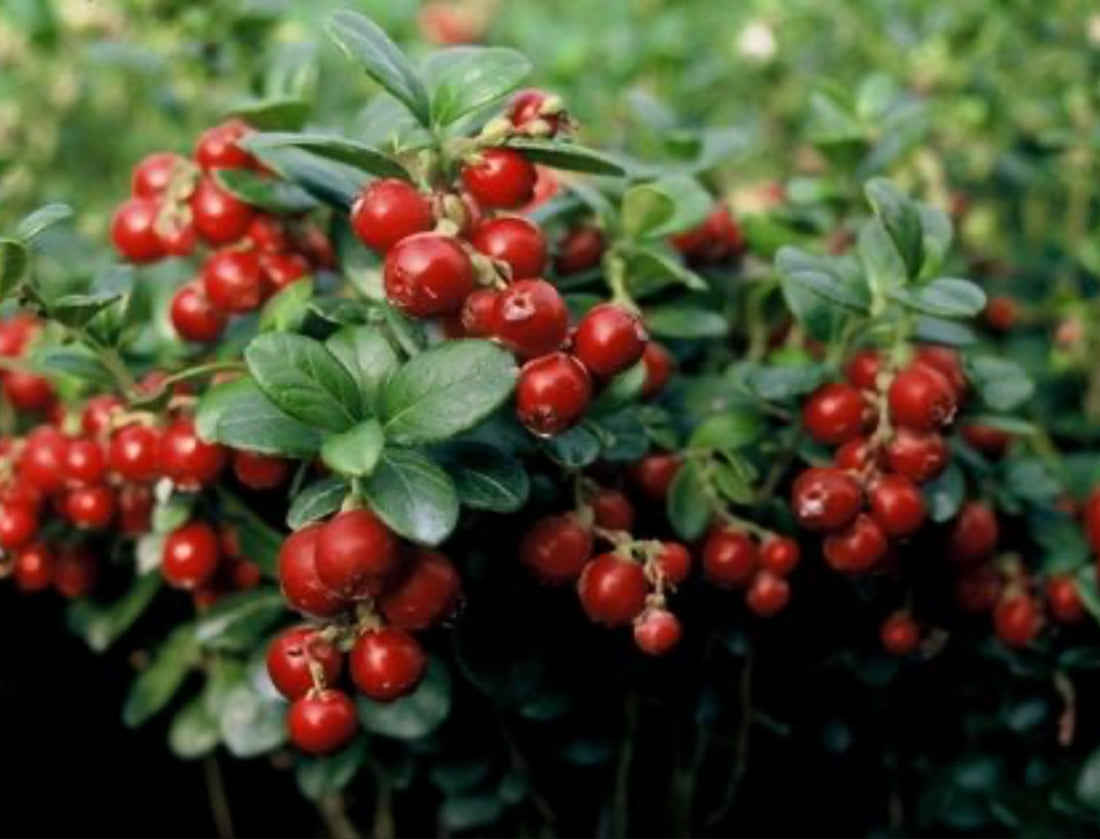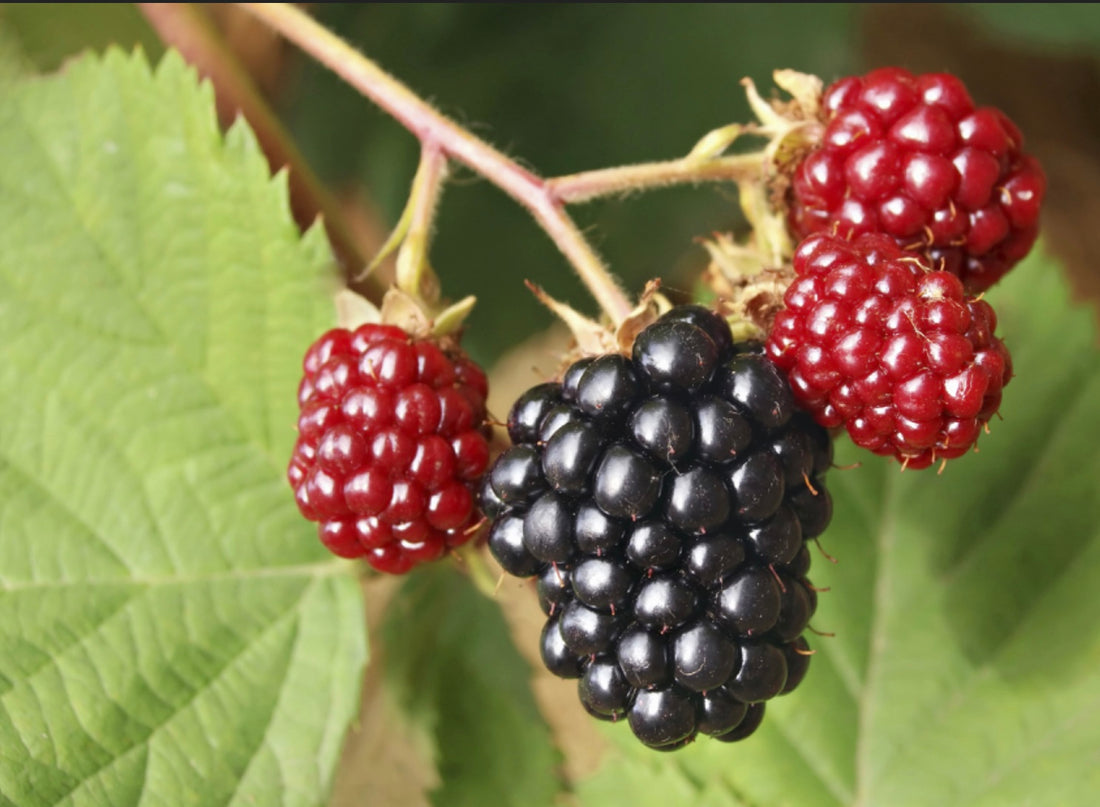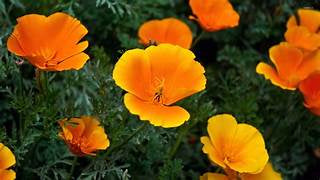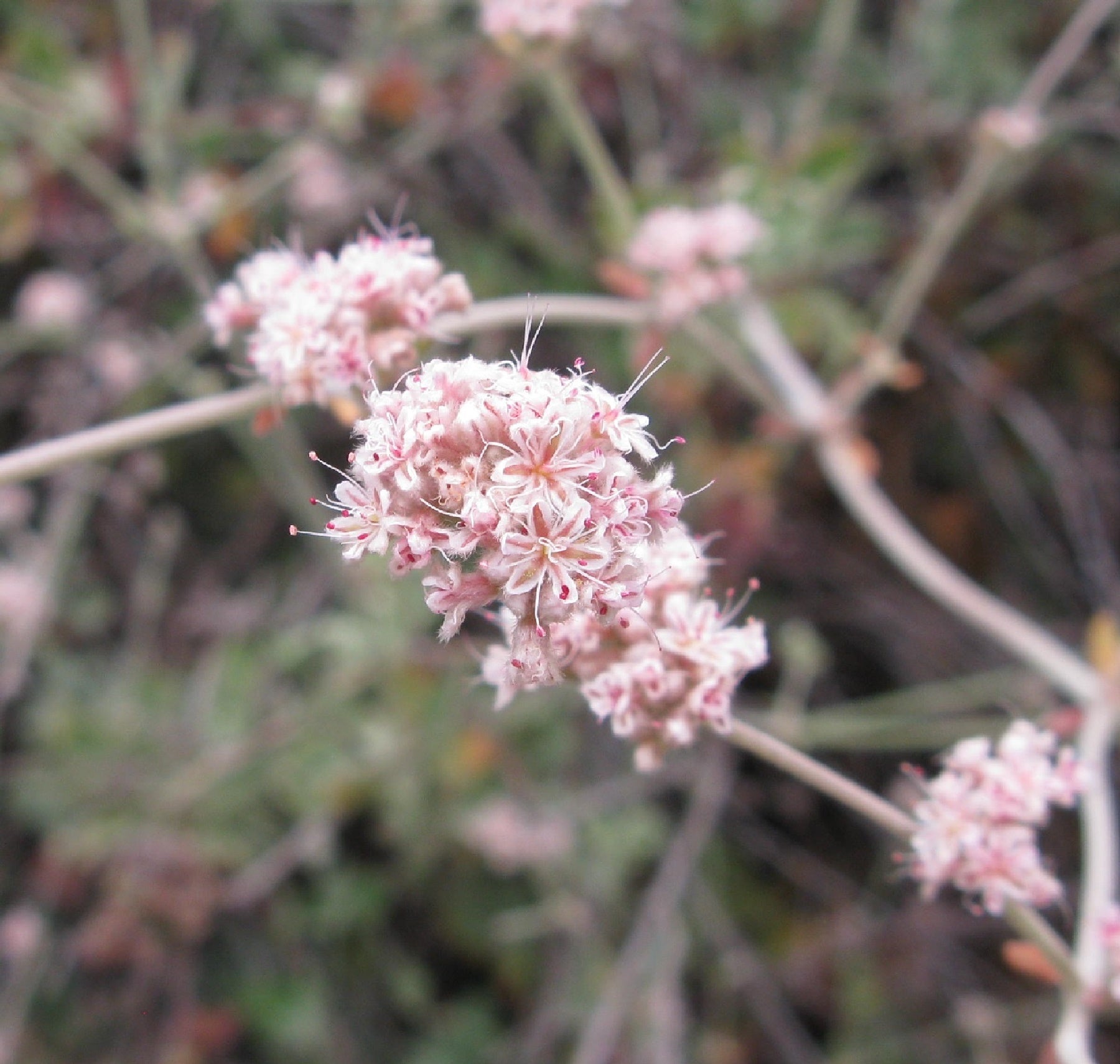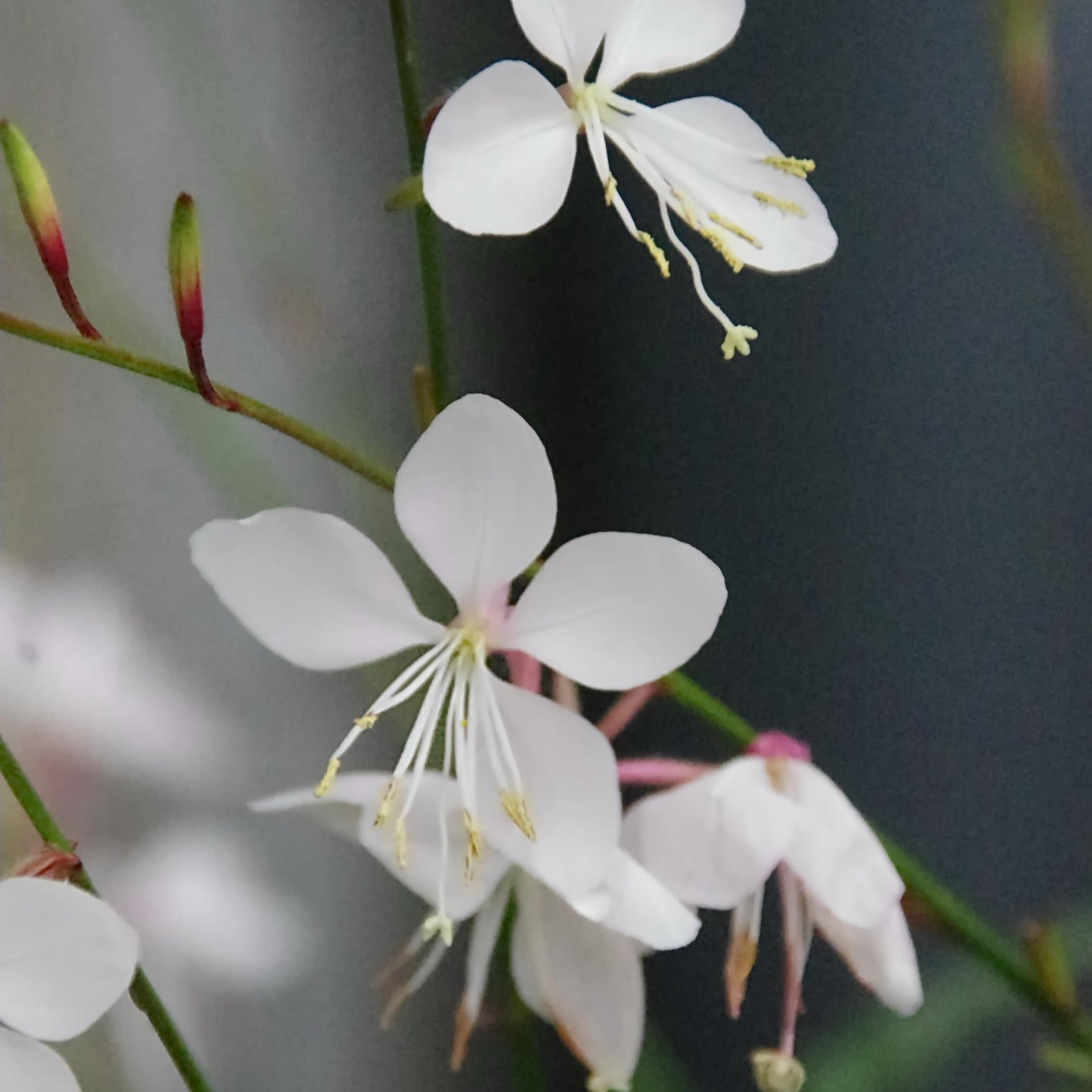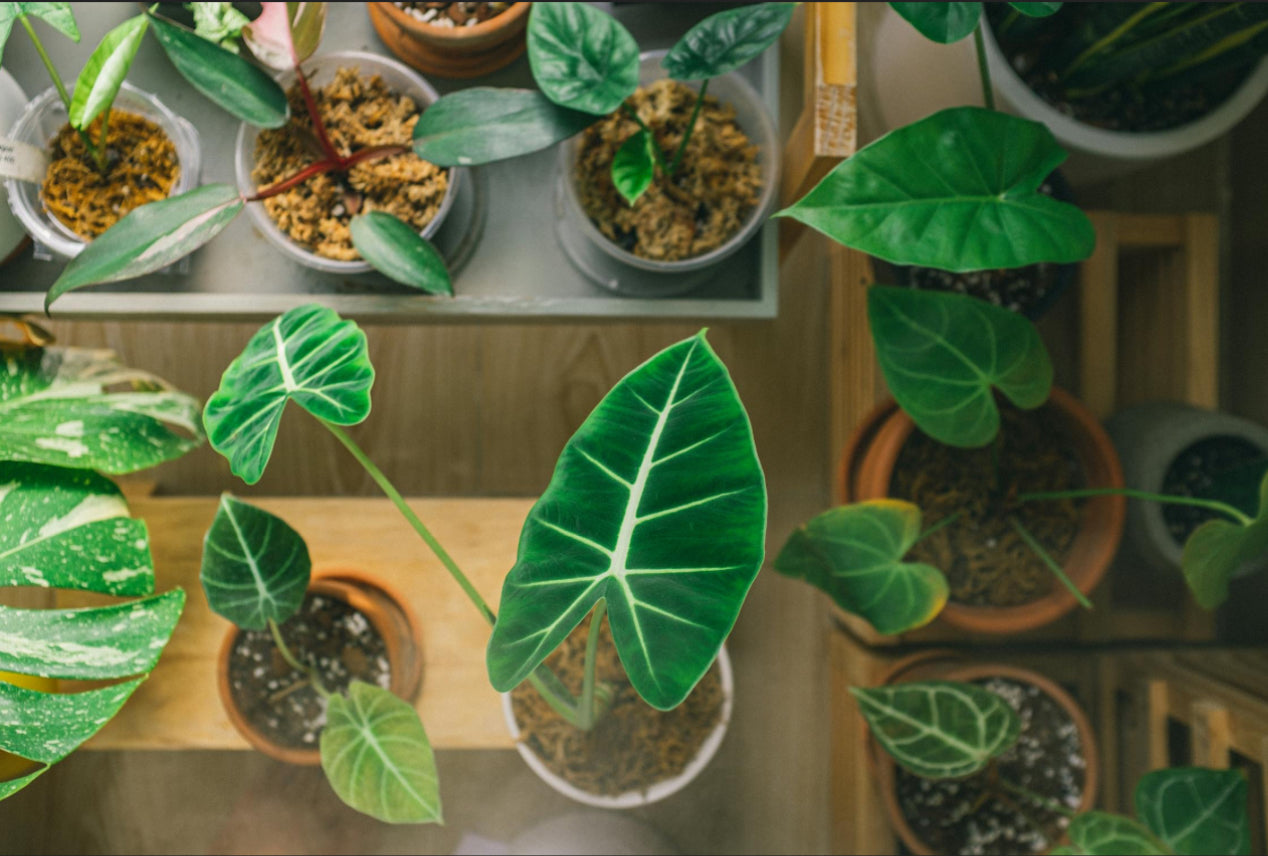Blogs
Benefits of Edible Landscaping
What is Edible Landscaping? Edible landscaping is a practice that combines the beauty of traditional landscaping with the functionality of growing edible plants. It involves incorporating fruits, vegetables, herbs, and even edible flowers into your outdoor space. Instead of purely ornamental plants, you can have a garden that not only looks stunning but also provides you with fresh, homegrown produce. Health and Nutrition One of the major benefits of edible landscaping is the improvement it brings to your health and nutrition. By growing your own fruits and vegetables, you have direct control over what goes into your food. You can avoid harmful pesticides and chemicals, ensuring that you and your family consume only fresh and organic produce. This can lead to a healthier diet and a reduced risk of various health issues. Sustainability Another advantage of edible landscaping is its positive impact on the environment. By growing your own food, you reduce the need for transportation and packaging, which contributes to carbon emissions. Additionally, you can practice sustainable gardening techniques such as composting and water conservation, further minimizing your ecological footprint. Edible landscaping promotes self-sufficiency and reduces reliance on industrial agriculture. Aesthetics Edible landscaping doesn't mean sacrificing beauty for functionality. In fact, it can enhance the aesthetics of your outdoor space. Many edible plants have attractive foliage, vibrant flowers, or interesting textures that can add visual interest to your garden. You can create a visually stunning landscape by incorporating edible plants alongside traditional ornamental plants. Imagine a colorful mix of lettuce, kale, and Swiss chard intermingled with flowers and shrubs. Cost Savings Growing your own food through edible landscaping can also lead to significant cost savings. Buying organic produce from the grocery store can be expensive, but by growing your own, you can save money on groceries. Additionally, you can reduce food waste by harvesting only what you need when you need it. With careful planning and maintenance, you can have a bountiful harvest throughout the growing season. Education and Family Bonding Edible landscaping provides an excellent opportunity for education and family bonding. It allows you to teach your children about the importance of sustainable living, where food comes from, and how to grow and care for plants. Working together in the garden can strengthen family relationships and create lasting memories. It's a chance to connect with nature and instill a sense of responsibility and appreciation for the environment. Conclusion Edible landscaping offers a multitude of benefits, from improved health and nutrition to sustainability and cost savings. It allows you to create a beautiful outdoor space while providing you with fresh, organic produce. By embracing edible landscaping, you can enjoy the rewards of self-sufficiency, environmental consciousness, and a deeper connection with nature.
Learn moreAronia Berry Plants
Aronia berry plants, also known as chokeberries, are gaining popularity among health-conscious individuals and garden enthusiasts. These small, dark berries pack a powerful punch when it comes to nutritional value and health benefits. In this blog post, we will explore the fascinating world of aronia berry plants, from their origins and cultivation to their potential health benefits and culinary uses. What are Aronia Berry Plants? Aronia berry plants belong to the Rosaceae family and are native to North America. They are deciduous shrubs that can grow up to 6 feet tall and produce clusters of small berries. The berries come in different colors, including black, red, and purple, and have a tart and slightly sweet flavor. Why Should You Grow Aronia Berry Plants? There are several reasons why growing aronia berry plants can be a rewarding experience: Nutritional Powerhouse: Aronia berries are rich in antioxidants, vitamins, and minerals. They are particularly high in anthocyanins, which give them their vibrant color and have been linked to various health benefits. Easy to Grow: Aronia berry plants are hardy and adaptable, making them suitable for a wide range of climates. They can tolerate both cold winters and hot summers, and they are resistant to many pests and diseases. Low Maintenance: Once established, aronia berry plants require minimal care. They are drought-tolerant and can thrive in a variety of soil types. Pruning is necessary to maintain their shape and promote fruit production. Landscaping Potential: In addition to their edible berries, aronia berry plants offer ornamental value with their attractive flowers in spring and colorful foliage in autumn. They can be used as hedges, borders, or focal points in gardens. How to Grow Aronia Berry Plants? Here are some essential tips for successfully growing aronia berry plants: Choose the Right Variety: There are different cultivars of aronia berry plants available, each with its own characteristics. Consider factors such as berry color, size, and flavor when selecting a variety. Site Selection: Aronia berry plants prefer full sun but can tolerate partial shade. They also require well-draining soil with a pH between 5.0 and 6.5. Avoid planting them in low-lying areas prone to waterlogging. Planting: Dig a hole slightly larger than the root ball of the plant. Place the plant in the hole, making sure the crown is level with the soil surface. Backfill the hole and water thoroughly. Watering and Fertilizing: Aronia berry plants have moderate water needs. Water deeply and regularly, especially during dry spells. Apply a balanced fertilizer in early spring to promote healthy growth and fruit production. Pruning: Prune aronia berry plants in late winter or early spring before new growth emerges. Remove any dead, damaged, or crossing branches. Thin out the center of the plant to improve air circulation. Health Benefits and Culinary Uses of Aronia Berries Aronia berries have gained attention for their potential health benefits. Here are some of the reasons why they are considered a superfruit: Antioxidant Power: Aronia berries are one of the richest sources of antioxidants, which help protect the body against oxidative stress and inflammation. Heart Health: The high levels of anthocyanins in aronia berries have been associated with improved cardiovascular health, including reduced blood pressure and cholesterol levels. Immune Support: The vitamins and minerals present in aronia berries, such as vitamin C and zinc, can help strengthen the immune system and promote overall well-being. Delicious and Versatile: Despite their tart taste, aronia berries can be used in various culinary creations. They can be enjoyed fresh, added to smoothies, baked into pies and muffins, or turned into jams and sauces. Whether you are a health enthusiast, a gardening aficionado, or simply curious about new flavors, aronia berry plants offer a delightful and nutritious addition to your garden and diet. Start growing your own aronia berry plants today and experience the wonders of nature's superfruit!
Learn moreCavendish Banana Plant
Have you ever wondered where the bananas you enjoy every day come from? One of the most popular banana varieties is the Cavendish banana, known for its sweet taste and creamy texture. In this blog post, we will explore the intriguing world of Cavendish banana plants and discover what makes them so special. What is a Cavendish Banana Plant? A Cavendish banana plant is a type of banana tree that belongs to the Musa species. It is named after Sir Henry Cavendish, an English scientist who made significant contributions to the field of chemistry. Cavendish banana plants are native to Southeast Asia and are now cultivated in various tropical regions around the world. How Do Cavendish Banana Plants Grow? Cavendish banana plants are herbaceous perennials that can reach a height of up to 20 feet. They have large, elongated leaves that are arranged spirally around the stem. The plants produce a single inflorescence, also known as a banana heart, which contains clusters of flowers. Each flower develops into a banana fruit. Why Are Cavendish Bananas So Popular? There are several reasons why Cavendish bananas have become the preferred choice for many consumers: Taste: Cavendish bananas have a deliciously sweet flavor that appeals to people of all ages. Texture: The creamy texture of Cavendish bananas makes them perfect for eating fresh or using in various recipes. Availability: Cavendish bananas are widely available in supermarkets and grocery stores throughout the year. Transportation: These bananas have a thick skin that helps protect them during transportation, making them ideal for international trade. The Threat to Cavendish Banana Plants Despite their popularity, Cavendish banana plants face a significant threat from a disease called Panama disease, caused by a soil-borne fungus. This disease can devastate entire plantations, as it spreads rapidly and is difficult to control. Efforts are being made to develop disease-resistant banana varieties to ensure the survival of the Cavendish banana. In Conclusion The Cavendish banana plant is a remarkable species that brings joy to millions of people around the world. Its delicious taste, creamy texture, and widespread availability have made it a favorite choice for banana lovers everywhere. However, the threat of Panama disease reminds us of the importance of biodiversity and the need to protect and preserve this beloved fruit for future generations.
Learn moreDrought Resistant Firestick Succulent
Are you looking for a unique and low-maintenance plant to add to your collection? Look no further than the Drought Resistant Firestick Succulent! This fascinating succulent is not only visually stunning but also incredibly easy to care for. In this blog post, we will explore the characteristics of the Firestick Succulent and provide you with all the information you need to successfully grow and enjoy this remarkable plant. What makes the Firestick Succulent special? The Firestick Succulent, also known as Euphorbia tirucalli 'Sticks on Fire,' is a striking plant that originates from Africa. Its most distinctive feature is its vibrant red and orange stems, which resemble sticks on fire. These stems are actually modified leaves that help the plant survive in arid conditions. Unlike other succulents, the Firestick Succulent does not store water in its leaves. Instead, it relies on its thick stems to store moisture, making it highly drought resistant. This unique adaptation allows the plant to thrive in dry and hot environments, making it an excellent choice for those who live in regions with limited water resources. How to care for the Firestick Succulent? 1. Sunlight: The Firestick Succulent thrives in bright, indirect sunlight. Place it near a window or in a well-lit area of your home. Avoid exposing it to direct sunlight for extended periods, as it can cause the stems to burn. 2. Watering: One of the key advantages of the Firestick Succulent is its low water requirements. Water the plant sparingly, allowing the soil to dry out completely between waterings. Overwatering can lead to root rot and other issues, so it's important to strike the right balance. 3. Soil: Use a well-draining soil mix specifically designed for succulents. This will prevent water from pooling around the roots and causing damage. You can also add perlite or sand to improve drainage. 4. Temperature and Humidity: The Firestick Succulent prefers warm temperatures between 65°F and 85°F (18°C to 29°C). It can tolerate lower temperatures for short periods but is not frost-resistant. As for humidity, it can adapt to both dry and humid environments, making it a versatile plant for various climates. Why choose the Firestick Succulent? 1. Low maintenance: If you're a busy individual or a beginner in the world of gardening, the Firestick Succulent is the perfect plant for you. Its ability to withstand drought and its minimal care requirements make it an excellent choice for those with a busy lifestyle. 2. Eye-catching beauty: The vibrant colors of the Firestick Succulent make it a stunning addition to any indoor or outdoor space. Its unique appearance is sure to be a conversation starter and will add a touch of exotic beauty to your surroundings. 3. Drought resistance: With increasing concerns about water scarcity, choosing drought-resistant plants like the Firestick Succulent is a responsible and sustainable choice. By opting for this succulent, you can contribute to water conservation efforts without compromising on the beauty of your garden. 4. Versatility: The Firestick Succulent can be grown in various settings, including containers, rock gardens, or as part of a succulent arrangement. Its adaptability and resilience make it a versatile plant that can thrive in different environments. Now that you know all about the remarkable Firestick Succulent, it's time to bring this unique plant into your life. Whether you're a seasoned plant enthusiast or just starting your green journey, the Firestick Succulent is sure to captivate you with its beauty and resilience. Start growing your own Firestick Succulent today and enjoy the benefits of this extraordinary plant!
Learn moreRed Candy Lingonberry Plant
Are you looking for a unique and delicious addition to your garden? Look no further than the Red Candy Lingonberry plant. This vibrant and versatile plant not only adds a pop of color to your landscape but also offers a plethora of health benefits. In this blog post, we will explore the many advantages of growing a Red Candy Lingonberry plant. What makes the Red Candy Lingonberry plant special? The Red Candy Lingonberry plant, scientifically known as Vaccinium vitis-idaea, is a small evergreen shrub that produces bright red berries. Native to the northern regions of Europe and North America, this plant thrives in cool climates and acidic soil. It is highly valued for its unique flavor and numerous health benefits. Health benefits of the Red Candy Lingonberry plant 1. Rich in antioxidants: The Red Candy Lingonberry is packed with antioxidants, which help protect the body against free radicals and reduce the risk of chronic diseases. 2. Boosts immune system: The high vitamin C content in Lingonberries strengthens the immune system, helping you fight off common illnesses. 3. Supports heart health: Lingonberries contain flavonoids that promote cardiovascular health by reducing inflammation and improving blood flow. 4. Aids in digestion: The fiber content in Lingonberries supports a healthy digestive system and prevents constipation. How to grow and care for a Red Candy Lingonberry plant 1. Choose the right location: Lingonberries prefer partial shade and well-drained, acidic soil. Find a spot in your garden that meets these requirements. 2. Planting: Dig a hole slightly larger than the root ball of the plant. Place the plant in the hole and backfill with soil, gently firming it around the base. 3. Watering: Keep the soil consistently moist but not waterlogged. Lingonberries have shallow roots, so frequent watering is necessary, especially during dry spells. 4. Pruning: Prune the plant in early spring to remove dead or damaged branches and promote new growth. Delicious ways to enjoy Red Candy Lingonberries 1. Jams and jellies: Lingonberries make excellent spreads for toast, scones, and pancakes. Their tart flavor adds a delightful twist to your breakfast routine. 2. Desserts: Use Lingonberries in pies, tarts, and cakes to add a burst of color and tangy taste. 3. Sauces: Lingonberry sauce pairs perfectly with savory dishes like roasted meats and poultry, adding a touch of sweetness and acidity. Now that you know the numerous benefits of growing a Red Candy Lingonberry plant, why not give it a try? Not only will you enjoy the vibrant beauty of this plant in your garden, but you'll also reap the rewards of its delicious and nutritious berries.
Learn moreStrawberry Verte Fig Tree: How to Grow, Care For, and Harvest This Sweet Green Fig
The Strawberry Verte Fig Tree has the kind of charm that makes a garden feel more personal. Its soft green skin and berry-red interior bring a surprisingly luxurious touch to small spaces, patios, and edible landscapes. It’s an easy tree to live with—productive, compact, and generous—perfect for gardeners who want beauty and homegrown sweetness without unnecessary fuss. Fig Varieties: What Makes the Strawberry Verte Fig Unique for Backyard Cultivation? Among the many fig varieties available today, Strawberry Verte stands out for its rosy interior and naturally balanced sweetness. It’s a wonderful fit for home growers who want something flavorful but not overly sugary. While classics like Black Mission and Kadota earn plenty of attention, Strawberry Verte fills a lovely middle ground: fruity, mild, and versatile in the kitchen. Its compact growth habit makes it friendly for suburban backyards or patios that can’t accommodate large orchard trees. Whether you’re planting a small edible garden or rebuilding your outdoor space after years of neglect, this fig happily adapts to whatever room you have. Fig History: Why Have Figs Been Culturally Significant for Thousands of Years? Figs have been part of human life for more than 5,000 years. They appear in ancient writings, ceremonies, and family orchards passed down through generations. In many Mediterranean communities, fig trees symbolized nourishment and wisdom—plants that fed both the body and spirit. Strawberry Verte comes from those old European growing traditions, where flavor and resilience were prized above all. Planting one carries a bit of that legacy into modern gardens, blending ancient practicality with today’s love for homegrown food. Fig Climate Requirements: What Conditions Help Strawberry Verte Thrive? Strawberry Verte loves warmth and long stretches of sun. USDA Zones 7–10 give it exactly what it needs: hot summers, mild winters, and the chance to develop full flavor. If you live in a cooler zone, you can still grow it successfully in a large container that can move indoors before deep winter sets in. The tree prefers well-draining soil—loamy or sandy works beautifully. Improving your soil with compost boosts drainage and aeration, especially if your garden tends to hold water. With the right foundation, this fig becomes a reliable, low-maintenance producer. What USDA zones does the Strawberry Verte fig grow in? Strawberry Verte grows reliably in USDA Zones 7–10, where winters stay mild enough for the wood to remain protected and fruiting stays consistent. In cooler regions, gardeners often treat it as a container plant, moving it into a garage or sheltered space once temperatures drop. With proper winter care, even Zone 6 growers can keep it productive. The tree responds well to heat, but it also appreciates moderate coastal climates, making it a flexible choice for many home orchards. Is the Strawberry Verte fig tree self-fertile? Yes, the Strawberry Verte fig tree is self-fertile, meaning a single tree can produce a full crop of fruit without needing another fig nearby for pollination. This makes it ideal for home gardens or small spaces where planting multiple trees isn’t practical. Container vs. Ground Planting: Which Option Works Best for Strawberry Verte Fig Trees? You can grow this fig almost anywhere—raised beds, garden soil, or a sturdy container. When planted in the ground, expect a full, rounded canopy about 10 to 12 feet across. In this setting, the root system strengthens and supports heavier fruiting. Container planting is ideal for smaller homes or apartment-style setups. A pot about 20 inches wide with drainage holes is enough to get started. Container trees stay around 6 to 8 feet tall, making them easier to move, shape, and harvest. How big does a Strawberry Verte fig tree get? A Strawberry Verte fig tree can reach 10–12 feet tall and wide when planted directly in the ground, forming a dense, spreading canopy. In containers, growth is naturally more compact, typically 6–8 feet in height and width, which makes it ideal for patios or small gardens. When does the Strawberry Verte fig tree produce fruit? The tree usually begins fruiting in mid to late summer, producing ripe, sweet figs between July and September. Proper sunlight, watering, and occasional pruning help maximize both growth and fruit production. How do you know when Strawberry Verte figs are ripe? You’ll know a Strawberry Verte fig is ready the moment it starts behaving like it’s done holding itself together. The fruit softens noticeably, the neck relaxes, and the fig begins to hang with a slight downward tilt. The skin deepens in color, sometimes showing a faint blush, and may develop tiny sugar cracks near the surface. When you press it lightly, it should give without feeling mushy. How Should You Prune and Maintain a Strawberry Verte Fig? Caring for a Strawberry Verte fig is wonderfully manageable. Winter is the best time for structural pruning—removing crossing branches and opening the center of the canopy so sunlight can reach all sides. This not only improves fruiting but makes harvesting more comfortable, especially if you don’t want to deal with ladders or tangled growth. During the growing season, a light trim keeps the tree shaped and encourages strong fruiting wood. Compost or organic mulch in spring is usually enough to keep the tree nourished, and once established, it needs only moderate watering. It’s hardy, calm, and forgiving—exactly what a busy gardener needs. What Pests and Diseases Commonly Affect Strawberry Verte? Strawberry Verte fig trees are naturally resistant to most major problems, though a few pests occasionally appear. Aphids, scale insects, and mites tend to show up during dry periods, and a quick treatment with neem oil or insecticidal soap usually clears them. Birds and squirrels are another story—they adore ripe figs just as much as we do. Netting helps protect your fruit as it nears ripeness. Avoid letting the soil stay overly wet to prevent fungal issues like leaf spot or root rot. Good airflow and steady sun go a long way in keeping the tree healthy. How Do You Harvest and Preserve Strawberry Verte Figs? Strawberry Verte figs ripen in soft shades of pale green, hiding their jewel-toned centers until picked. Handle ripe figs carefully—they bruise with the slightest pressure. Eat them fresh within a few days, or freeze, dry, or turn them into preserves for longer enjoyment. The leaves are also pleasantly aromatic and useful in teas or as natural wraps for cooking. If you like to gather ingredients that feel nurturing and practical, this tree becomes a lovely part of your yearly kitchen routine. How Can Strawberry Verte Figs Be Enjoyed in the Kitchen? Fresh Strawberry Verte figs have a gentle sweetness that pairs beautifully with soft cheeses, fresh herbs, honey, and a glass of something cold after a long day. They shine in salads, desserts, tarts, and homemade jam. Roasted figs make an elegant yet unfussy treat, perfect for weekend dinners or quiet evenings. Beyond food, figs carry cultural meaning—gratitude, comfort, and a sense of sharing. Growing them at home turns even a small harvest into something worth celebrating. Conclusion At Blossomdale Plant Nursery, we’ve always believed that a garden should feel like an extension of your life—easy, uplifting, and rewarding. The Strawberry Verte Fig Tree embodies all of that. Whether it lives in a sunny backyard or a patio container, it gives warmth, beauty, and fruit that feels like a small luxury you grew yourself.
Learn moreJewel Southern Highbush Blueberry: Growing Guide, Care Tips, and Benefits
Jewel Southern Highbush Blueberries are every gardener’s treat—fast-growing, fruitful, and deliciously satisfying. Known for their plump size and bright, tangy flavor, these berries thrive in warm regions where many other varieties struggle. Here’s what you need to know to grow and care for this rewarding blueberry variety. The Best Climates for Growing Jewel Blueberries Jewel Southern Highbush Blueberries were developed for areas with mild winters and warm, humid summers. They thrive in climates like the Southeastern U.S., coastal California, and other subtropical zones. Unlike northern varieties that require long, cold winters to set fruit, Jewel only needs a short chill period to bloom well. That makes it perfect for USDA Zones 7 through 10. Give it full sun, moderate moisture, and a brief taste of cool weather, and you’ll be rewarded with vigorous growth and an early summer harvest. Why Soil Acidity Matters for Blueberries If blueberries have one must-have condition, it’s acidic soil. They need a pH between 4.5 and 5.5—slightly sour, much like the fruit itself. In alkaline soils, the roots can’t properly absorb nutrients, which leads to yellowing leaves and poor growth. Before planting, enrich the soil with organic materials like pine bark, peat moss, or composted leaves. You can also add sulfur-based amendments to naturally lower the pH. Once planted, a thick layer of pine needle or shredded bark mulch keeps the acidity stable and the roots cool through the heat of summer. Southern vs. Northern Blueberries: Which Variety Is Right for You? Blueberries fall into two main types: Northern Highbush and Southern Highbush. Northern Highbush varieties love cold winters and thrive in regions like the Northeast or upper Midwest. Southern Highbush varieties, like Jewel, were bred to handle heat, humidity, and shorter winters while still producing abundantly. If you garden in a warmer or coastal climate, Jewel is your go-to. It’s more forgiving with soil and weather changes, making it a dependable choice for home gardens where northern types would struggle. The Best Companion Plants for Blueberries Because blueberries love acidic soil, they pair best with other acid-loving plants. Try azaleas, camellias, hydrangeas, or ferns for a harmonious mix that shares similar needs. To boost productivity, plant pollinator favorites like lavender, echinacea, or salvia nearby. Bees are key to a heavy fruit set, and these companions help attract them. Plus, the blend of textures and blooms makes for a garden that’s as beautiful as it is bountiful. Watering Tips to Keep Your Blueberries Healthy Blueberries enjoy steady moisture, especially when setting and ripening fruit—but soggy soil is their enemy. The goal is consistent, deep watering without waterlogging. Water thoroughly once or twice a week, depending on the weather, and increase during hot or windy spells. Mulch well with organic material two to three inches thick to keep the soil cool and retain moisture. Drip irrigation works wonderfully for blueberries, keeping the foliage dry and the roots evenly hydrated. The Health Benefits of Jewel Blueberries Beyond their garden charm, Jewel Blueberries are packed with nutrition. They’re rich in antioxidants, vitamin C, fiber, and anthocyanins—natural compounds known to support heart and brain health. Because Jewel ripens early and stays firm after harvest, it’s perfect for snacking, baking, smoothies, or freezing. Growing your own means every berry is sun-ripened and pesticide-free. Many of our Blossomdale gardeners love turning their harvest into homemade jams or sharing fresh berries straight from the bush—it’s simple, healthy joy. How to Deal with Pests and Problems in Blueberry Plants Blueberries are relatively low-maintenance, but they do have a few admirers—especially birds. To protect your crop, cover the plants with lightweight netting when berries begin to ripen. Aphids, leafrollers, and spider mites may appear from time to time. Organic sprays like neem oil or insecticidal soap keep them in check. For fungal issues such as powdery mildew or root rot, proper drainage and pruning for airflow make all the difference. Healthy, well-cared-for plants rarely face serious trouble. Are Jewel Blueberries Good for Home or Market Growing? Absolutely. Jewel stands out for its high yield, large fruit, and firm texture, which makes it perfect for both backyard gardeners and market growers. The berries store and transport well, maintaining their flavor and shape—something market sellers especially appreciate. For home gardeners, Jewel adds year-round appeal with glossy green leaves that turn reddish in winter. For growers, it’s a reliable, profitable crop that combines beauty and productivity. Final Thoughts The Jewel Southern Highbush Blueberry brings together everything gardeners love—beauty, abundance, and easy care. Whether you’re planting a few shrubs for family harvests or building a small blueberry patch, Jewel rewards your effort with sweet fruit and dependable growth. At Blossomdale Plant Nursery, we believe the best plants are those that make gardening both joyful and practical—and Jewel blueberries are just that.
Learn moreThe Ultimate Guide to Growing Navajo Thornless Blackberry
What is a Navajo Thornless Blackberry? A Navajo Thornless Blackberry is a type of blackberry plant that is known for its lack of thorns. It is a popular choice among gardeners and fruit enthusiasts because it is easier to handle and harvest compared to traditional blackberry plants. Why Should You Grow Navajo Thornless Blackberries? There are several reasons why you should consider growing Navajo Thornless Blackberries: Convenience: With no thorns to worry about, harvesting the berries becomes a pain-free experience. Space-saving: Navajo Thornless Blackberries can be grown in containers, making them suitable for small gardens or even balconies. High yield: These blackberries are known for their abundant fruit production, ensuring you'll have plenty to enjoy. Delicious taste: Navajo Thornless Blackberries have a sweet and tangy flavor that is perfect for eating fresh or using in various culinary creations. How to Grow Navajo Thornless Blackberries? Follow these steps to successfully grow Navajo Thornless Blackberries: 1. Choose the Right Location Navajo Thornless Blackberries thrive in full sun, so select a location in your garden that receives at least 6-8 hours of direct sunlight each day. Ensure the soil is well-draining and rich in organic matter. 2. Prepare the Soil Before planting, prepare the soil by removing any weeds or grass and loosening it with a garden fork or tiller. Incorporate compost or well-rotted manure to improve soil fertility. 3. Planting Dig a hole that is wide and deep enough to accommodate the blackberry plant's root system. Place the plant in the hole, ensuring the crown is level with the soil surface. Backfill the hole and gently firm the soil around the plant. 4. Watering and Mulching Water the newly planted blackberry thoroughly and apply a layer of organic mulch around the base of the plant to conserve moisture and suppress weed growth. 5. Pruning and Training Prune the blackberry canes in late winter or early spring to remove dead or damaged wood and to promote new growth. Train the canes along a trellis or support system to keep them upright and organized. 6. Fertilizing Apply a balanced fertilizer formulated for fruit-bearing plants in early spring and again in early summer to provide the necessary nutrients for healthy growth and fruit production. 7. Pest and Disease Control Monitor your blackberry plants regularly for signs of pests or diseases. Common issues include aphids, spider mites, and powdery mildew. Use organic pest control methods or consult with a local gardening expert for appropriate treatments. Harvesting Navajo Thornless Blackberries Navajo Thornless Blackberries are typically ready for harvest in late summer or early fall. The berries should be fully black and easily detach from the plant when gently pulled. Harvest the ripe berries regularly to encourage continuous fruiting. Enjoy the Fruits of Your Labor Once you have harvested your Navajo Thornless Blackberries, you can enjoy them fresh, use them in desserts, or even make homemade blackberry jam. The possibilities are endless! By following these guidelines, you can successfully grow Navajo Thornless Blackberries and enjoy a bountiful harvest of delicious, thorn-free berries.
Learn moreMost Drought-Resistant Native Plants
Are you tired of spending hours watering your garden, only to see your plants wither under the scorching sun? It's time to consider incorporating drought-resistant native plants into your landscape. These plants are not only beautiful but also require minimal water once established. In this blog post, we will explore ten stunning native plants that can thrive in dry conditions and add a touch of natural beauty to your garden. 1. California Poppy (Eschscholzia californica) The vibrant orange flowers of the California Poppy are a sight to behold. This hardy plant can survive in arid climates and is well-known for its ability to self-seed, creating a stunning carpet of color in your garden. 2. Purple Coneflower (Echinacea purpurea) The Purple Coneflower is not only drought-resistant but also attracts pollinators like bees and butterflies. Its beautiful pink-purple petals and distinctive cone-shaped center make it a standout addition to any garden. 3. Texas Sage (Leucophyllum frutescens) Also known as "Barometer Bush," the Texas Sage is a tough and low-maintenance plant that thrives in hot and dry climates. Its silver-gray foliage and delicate purple flowers add a touch of elegance to any landscape. 4. Yucca (Yucca spp.) The Yucca plant is a true survivor, with its sword-like leaves and towering flower spikes. It can tolerate extreme heat and drought conditions, making it a perfect choice for a xeriscape garden. 5. Agave (Agave spp.) Agaves are known for their striking architectural form and ability to withstand prolonged periods of drought. These succulent plants come in various sizes and shapes, adding a unique touch to your garden. 6. Red Yucca (Hesperaloe parviflora) The Red Yucca is a stunning plant with long, arching leaves and tall flower spikes adorned with tubular red flowers. Despite its name, it is not a true yucca but shares similar drought-resistant qualities. 7. Desert Marigold (Baileya multiradiata) The Desert Marigold is a resilient perennial that thrives in dry, desert-like conditions. Its bright yellow flowers and silver-gray foliage create a striking contrast, making it a popular choice among gardeners. 8. Blackfoot Daisy (Melampodium leucanthum) The Blackfoot Daisy is a small but mighty plant that can tolerate extreme heat and drought. Its delicate white flowers and gray-green foliage make it a charming addition to rock gardens or as a border plant. 9. Desert Mariposa Lily (Calochortus kennedyi) This native lily is a true desert gem, with its stunning pink or white flowers and grass-like foliage. It thrives in dry, sandy soils and can add a touch of elegance to any xeriscape garden. 10. Blue Grama Grass (Bouteloua gracilis) Blue Grama Grass is a native prairie grass that is well-adapted to drought conditions. Its fine-textured blades and delicate seed heads create a beautiful, naturalistic look in any landscape. By incorporating these drought-resistant native plants into your garden, you can create a sustainable and low-maintenance landscape that thrives even in the driest of conditions. Not only will you save time and water, but you will also support local ecosystems and attract beneficial wildlife. So, why not embrace the beauty of native plants and create a garden that is both stunning and environmentally friendly?
Learn more





